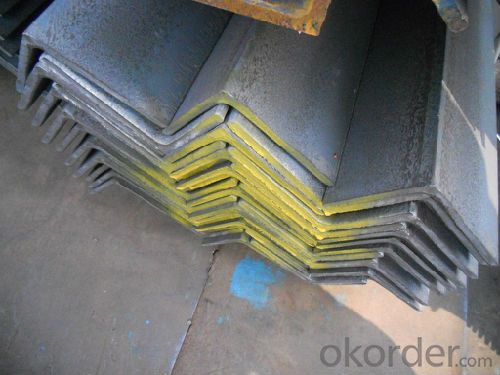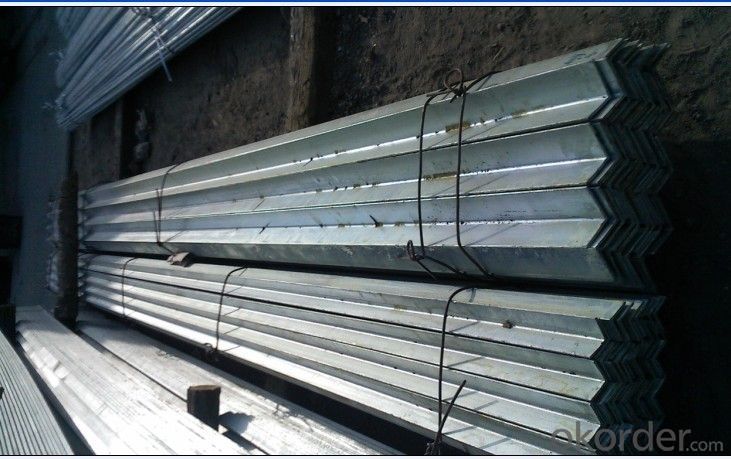Hot Rolled Steel Unequal Angle Bars
- Loading Port:
- Tianjin
- Payment Terms:
- TT or LC
- Min Order Qty:
- 100 m.t.
- Supply Capability:
- 20000 m.t./month
OKorder Service Pledge
OKorder Financial Service
You Might Also Like
OKorder is offering Hot Rolled Steel Unequal Angle Bars at great prices with worldwide shipping. Our supplier is a world-class manufacturer of steel, with our products utilized the world over. OKorder annually supplies products to African, South American and Asian markets. We provide quotations within 24 hours of receiving an inquiry and guarantee competitive prices.
Product Applications:
Hot Rolled Steel Unequal Angle Bars are ideal for structural applications and are widely used in the construction of buildings and bridges, and the manufacturing, petrochemical, and transportation industries
Product Advantages:
OKorder's Hot Rolled Steel Unequal Angle Bars are durable, strong, and wide variety of sizes.
Main Product Features:
· Premium quality
· Prompt delivery & seaworthy packing (30 days after receiving deposit)
· Can be recycled and reused
· Mill test certification
· Professional Service
· Competitive pricing
Product Specifications:
Manufacture: Hot rolled
Grade: Q195 – 235
Certificates: ISO, SGS, BV, CIQ
Length: 6m – 12m, as per customer request
Packaging: Export packing, nude packing, bundled
| UNEQUAL ANGLE STEEL | |||||
| size(mm) | a(mm) | a1(mm) | thickness(mm) | kg/m | length(m) |
| 75*50*5 | 75 | 50 | 5 | 4.808 | 6m,9m,12m |
| 75*50*6 | 75 | 50 | 6 | 5.699 | 6m,9m,12m |
| 75*50*8 | 75 | 50 | 8 | 7.431 | 6m,9m,12m |
| 100*75*7 | 100 | 75 | 7 | 9.34 | 6m,9m,12m |
| 100*75*8 | 100 | 75 | 8 | 10.6 | 6m,9m,12m |
| 100*75*9 | 100 | 75 | 9 | 11.8 | 6m,9m,12m |
| 100*75*10 | 100 | 75 | 10 | 13 | 6m,9m,12m |
| 100*75*12 | 100 | 75 | 12 | 15.4 | 6m,9m,12m |
| 125*75*7 | 125 | 75 | 7 | 10.7 | 6m,9m,12m |
| 125*75*8 | 125 | 75 | 8 | 12.2 | 6m,9m,12m |
| 125*75*9 | 125 | 75 | 9 | 13.6 | 6m,9m,12m |
| 125*75*10 | 125 | 75 | 10 | 15 | 6m,9m,12m |
| 125*75*12 | 125 | 75 | 12 | 17.8 | 6m,9m,12m |
| 150*90*8 | 150 | 90 | 8 | 14.7 | 6m,9m,12m |
| 150*90*9 | 150 | 90 | 9 | 16.4 | 6m,9m,12m |
| 150*90*10 | 150 | 90 | 10 | 18.2 | 6m,9m,12m |
| 150*90*12 | 150 | 90 | 12 | 21.6 | 6m,9m,12m |
| 200*100*10 | 200 | 100 | 10 | 23 | 6m,9m,12m |
| 200*100*12 | 200 | 100 | 12 | 27.62 | 6m,9m,12m |
| 200*100*15 | 200 | 100 | 15 | 34.04 | 6m,9m,12m |
FAQ:
Q1: Why buy Materials & Equipment from OKorder.com?
A1: All products offered byOKorder.com are carefully selected from China's most reliable manufacturing enterprises. Through its ISO certifications, OKorder.com adheres to the highest standards and a commitment to supply chain safety and customer satisfaction.
Q2: How do we guarantee the quality of our products?
A2: We have established an advanced quality management system which conducts strict quality tests at every step, from raw materials to the final product. At the same time, we provide extensive follow-up service assurances as required.
Q3: How many tons of steel products could be loaded in containers?
A3: Usually the steel products are delivered by bulk vessel because of the large quantity and the freight. However, there are no bulk vessel enter some seaports so that we have to deliver the cargo by containers. The 6m steel product can be loaded in 20FT container, but the quantity is changed according to the size, usually from 18tons to 25tons.
Images:


- Q: Can steel angles be used in marine applications?
- Yes, steel angles can be used in marine applications. They are commonly used in the construction of ships, offshore platforms, and marine structures due to their strength, durability, and corrosion resistance properties. Steel angles provide structural support and stability in marine environments, making them suitable for various applications in the maritime industry.
- Q: Can steel angles be used in HVAC ductwork installations?
- Yes, steel angles can be used in HVAC ductwork installations. They are commonly used to provide structural support and reinforcement to the ductwork system, ensuring stability and durability. Steel angles can be easily integrated into the ductwork design, facilitating efficient installation and improving overall system performance.
- Q: Are steel angles suitable for rooftop installations?
- Yes, steel angles are suitable for rooftop installations. They are commonly used in construction for their strength and durability. Steel angles provide structural support and can be easily attached to rooftops to secure various installations such as solar panels, antennas, or HVAC equipment.
- Q: Do steel angles have a smooth or textured surface?
- Steel angles generally possess a textured exterior, which is formed when the steel is either hot-rolled or cold-formed into the angled shape during the manufacturing process. As a consequence, the steel angles acquire a slightly uneven or knobby surface, enhancing their ability to offer improved grip and stability in diverse applications. Furthermore, this texture serves to deter objects from slipping or sliding when they come into contact with the steel angles. Nevertheless, it should be noted that the degree of texture can differ based on the particular manufacturing technique employed and the intended purpose of the steel angles.
- Q: What is the typical thickness of the flanges of a steel angle?
- The typical thickness of the flanges of a steel angle can vary depending on the specific design and application, but it is commonly found in the range of 1/8 inch to 3/4 inch.
- Q: Can steel angles be used for shelving?
- Yes, steel angles can be used for shelving. Steel angles are commonly used in shelving systems due to their durability and strength. They provide sturdy support for shelves and can withstand heavy loads. Additionally, steel angles are versatile and can be easily customized to fit different shelving configurations. They are often used in industrial settings, warehouses, garages, and even in residential applications where a strong and reliable shelving solution is desired.
- Q: How do you calculate the section modulus of a steel angle?
- The section modulus of a steel angle can be calculated by dividing the moment of inertia of the angle cross-section by the distance of the furthest point from the centroid to the extreme fiber.
- Q: How do you calculate the radius of gyration for a steel angle?
- The radius of gyration for a steel angle can be calculated using the formula: Radius of Gyration = √(Moment of Inertia / Area) The Moment of Inertia can be determined by considering the shape and dimensions of the steel angle. The Area is the cross-sectional area of the steel angle. By plugging in these values into the formula, the radius of gyration can be calculated.
- Q: What is the weight of a steel angle?
- Determining the weight of a steel angle relies on its dimensions and density. In order to calculate the weight, it is necessary to possess knowledge of the length, width, and thickness of the steel angle. By multiplying the angle's volume (length x width x thickness) by the density of steel, the weight can be ascertained. Steel typically has a density of approximately 7.85 grams per cubic centimeter. Consequently, the weight of a steel angle can be computed using the formula: weight = volume x density.
- Q: Are steel angles resistant to pests or insects?
- Steel angles are not resistant to pests or insects. Unlike certain materials, such as treated wood, steel does not naturally repel or discourage pests or insects. However, steel angles can still be an effective solution in preventing pest or insect damage when used in conjunction with other pest control measures. For example, sealing any gaps or openings around the steel angles can help prevent pests or insects from accessing the area. Additionally, regular inspections and maintenance can help identify and address any pest or insect issues before they become a major problem.
Send your message to us
Hot Rolled Steel Unequal Angle Bars
- Loading Port:
- Tianjin
- Payment Terms:
- TT or LC
- Min Order Qty:
- 100 m.t.
- Supply Capability:
- 20000 m.t./month
OKorder Service Pledge
OKorder Financial Service
Similar products
Hot products
Hot Searches
Related keywords



























